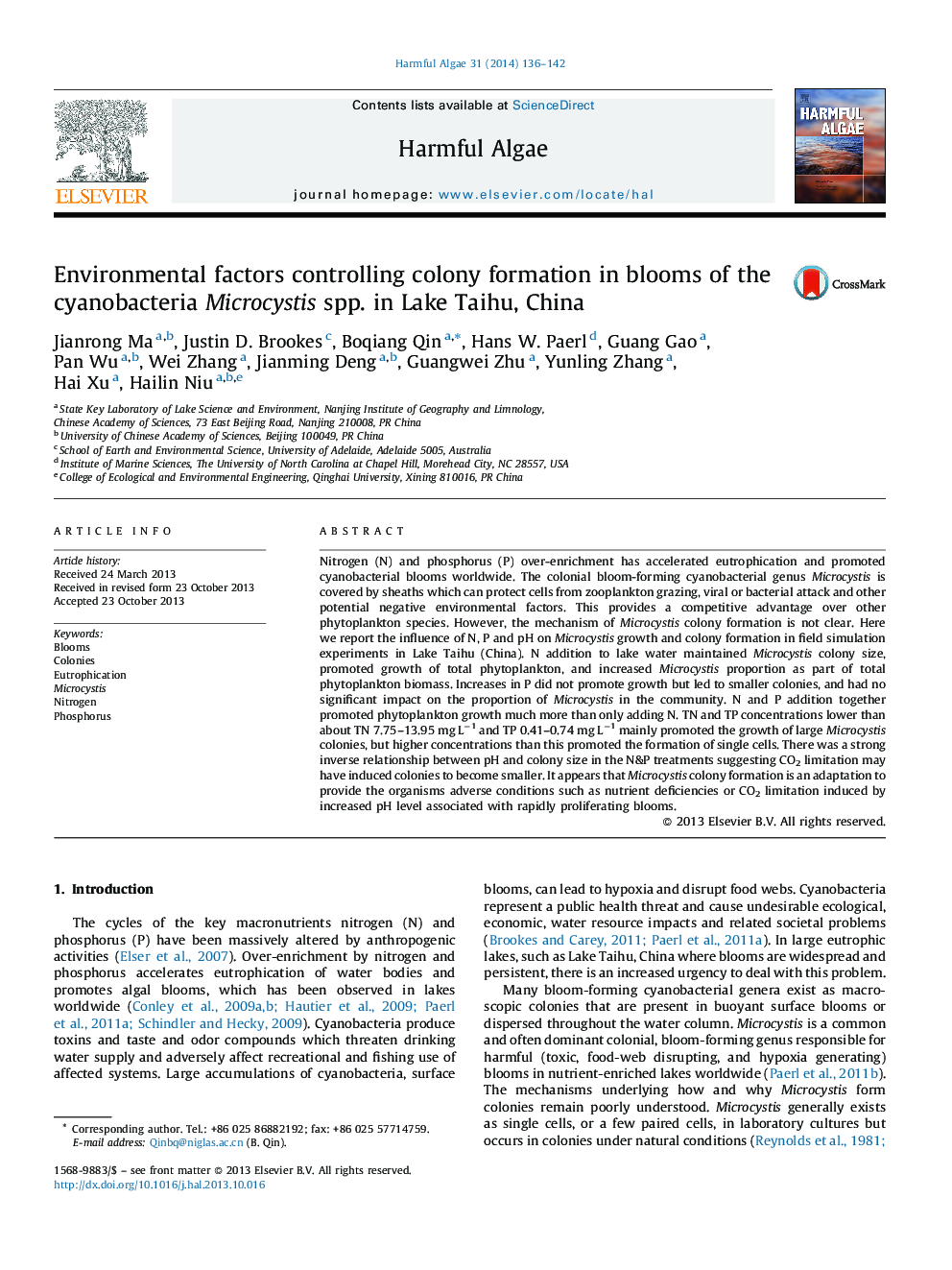| کد مقاله | کد نشریه | سال انتشار | مقاله انگلیسی | نسخه تمام متن |
|---|---|---|---|---|
| 4545391 | 1626940 | 2014 | 7 صفحه PDF | دانلود رایگان |

• We report the influence of nitrogen, phosphorus and pH on colony formation in blooms of the cyanobacteria Microcystis spp.
• Microcystis colony formation is an adaptation to provide the organisms adverse conditions.
• Low concentration nutrients mainly promote the growth of large Microcystis colonies but high concentration promote the formation of single cells.
• Nitrogen is benefit Microcystis colony formation but phosphorus is on the contrary.
• CO2 limitation result from high pH may induce Microcystis colonies to become smaller.
Nitrogen (N) and phosphorus (P) over-enrichment has accelerated eutrophication and promoted cyanobacterial blooms worldwide. The colonial bloom-forming cyanobacterial genus Microcystis is covered by sheaths which can protect cells from zooplankton grazing, viral or bacterial attack and other potential negative environmental factors. This provides a competitive advantage over other phytoplankton species. However, the mechanism of Microcystis colony formation is not clear. Here we report the influence of N, P and pH on Microcystis growth and colony formation in field simulation experiments in Lake Taihu (China). N addition to lake water maintained Microcystis colony size, promoted growth of total phytoplankton, and increased Microcystis proportion as part of total phytoplankton biomass. Increases in P did not promote growth but led to smaller colonies, and had no significant impact on the proportion of Microcystis in the community. N and P addition together promoted phytoplankton growth much more than only adding N. TN and TP concentrations lower than about TN 7.75–13.95 mg L−1 and TP 0.41–0.74 mg L−1 mainly promoted the growth of large Microcystis colonies, but higher concentrations than this promoted the formation of single cells. There was a strong inverse relationship between pH and colony size in the N&P treatments suggesting CO2 limitation may have induced colonies to become smaller. It appears that Microcystis colony formation is an adaptation to provide the organisms adverse conditions such as nutrient deficiencies or CO2 limitation induced by increased pH level associated with rapidly proliferating blooms.
Journal: Harmful Algae - Volume 31, January 2014, Pages 136–142